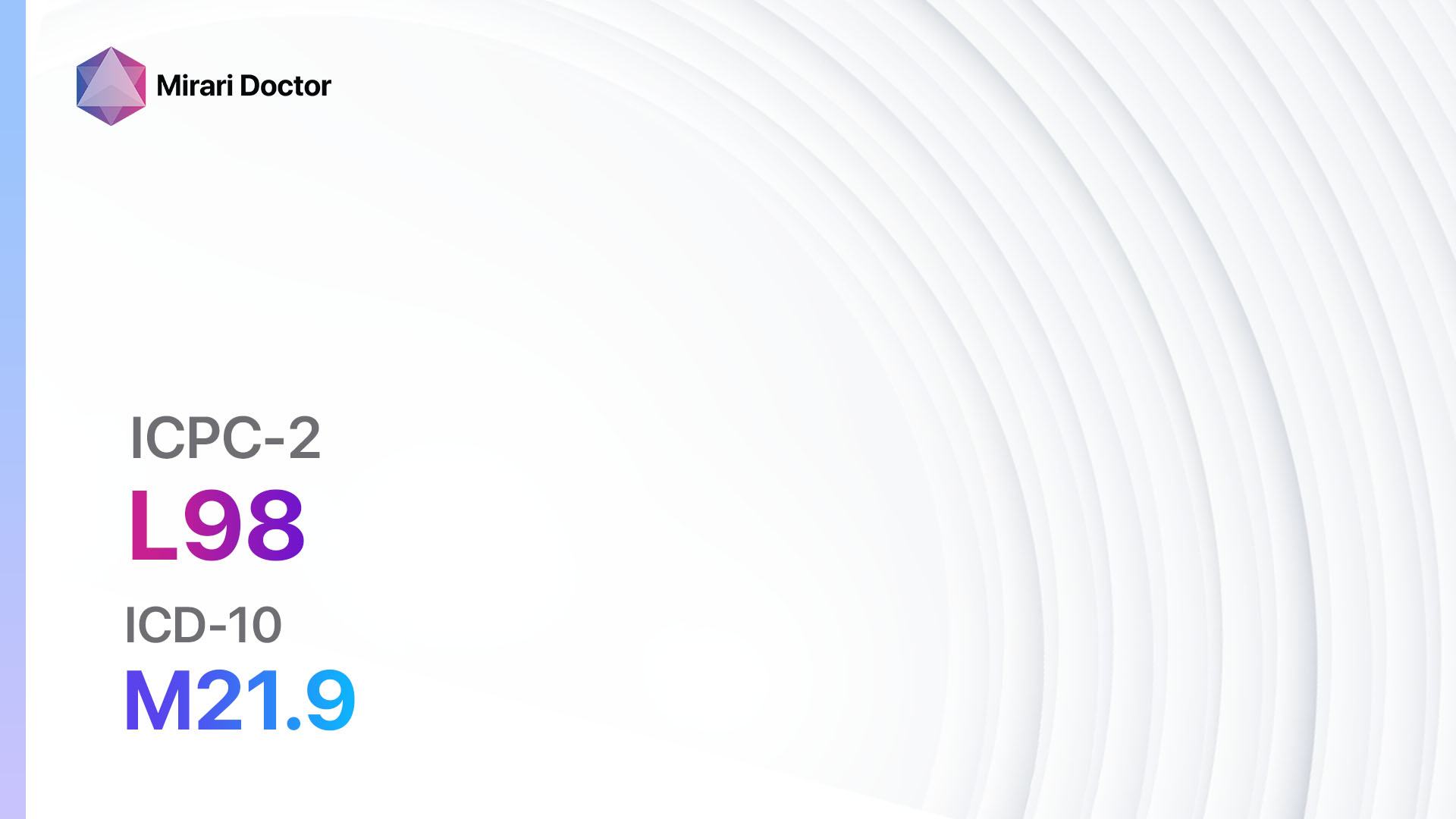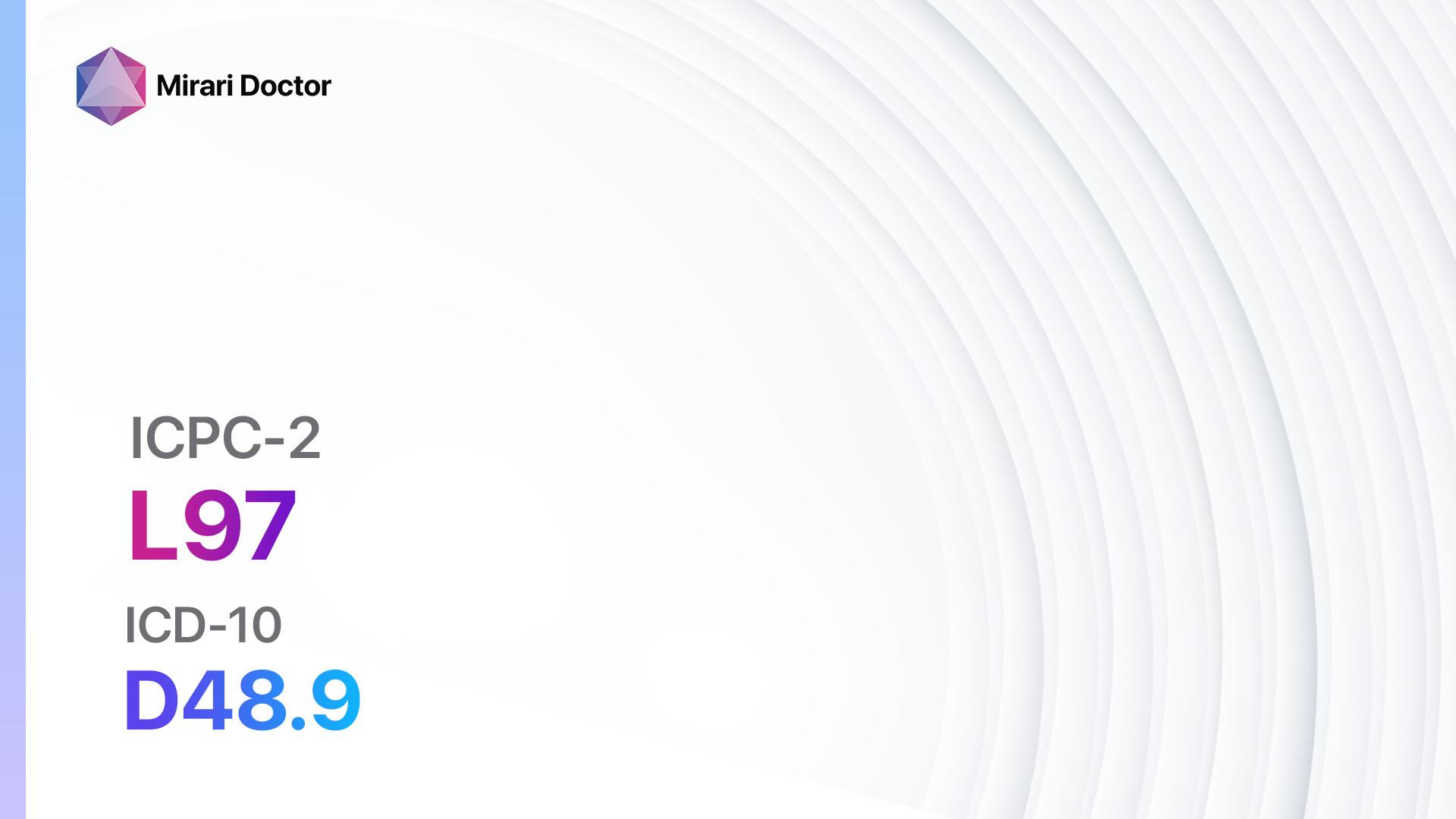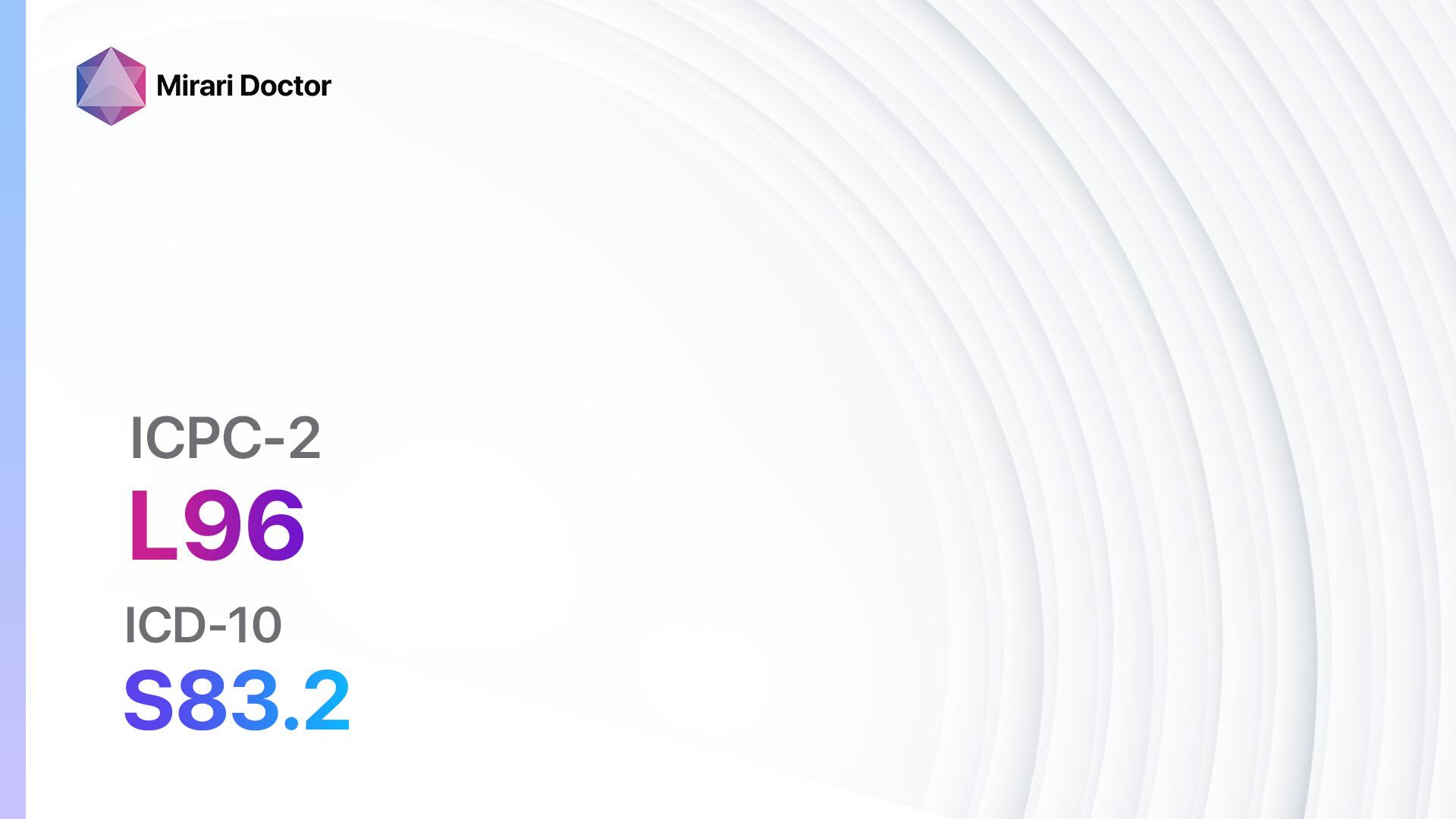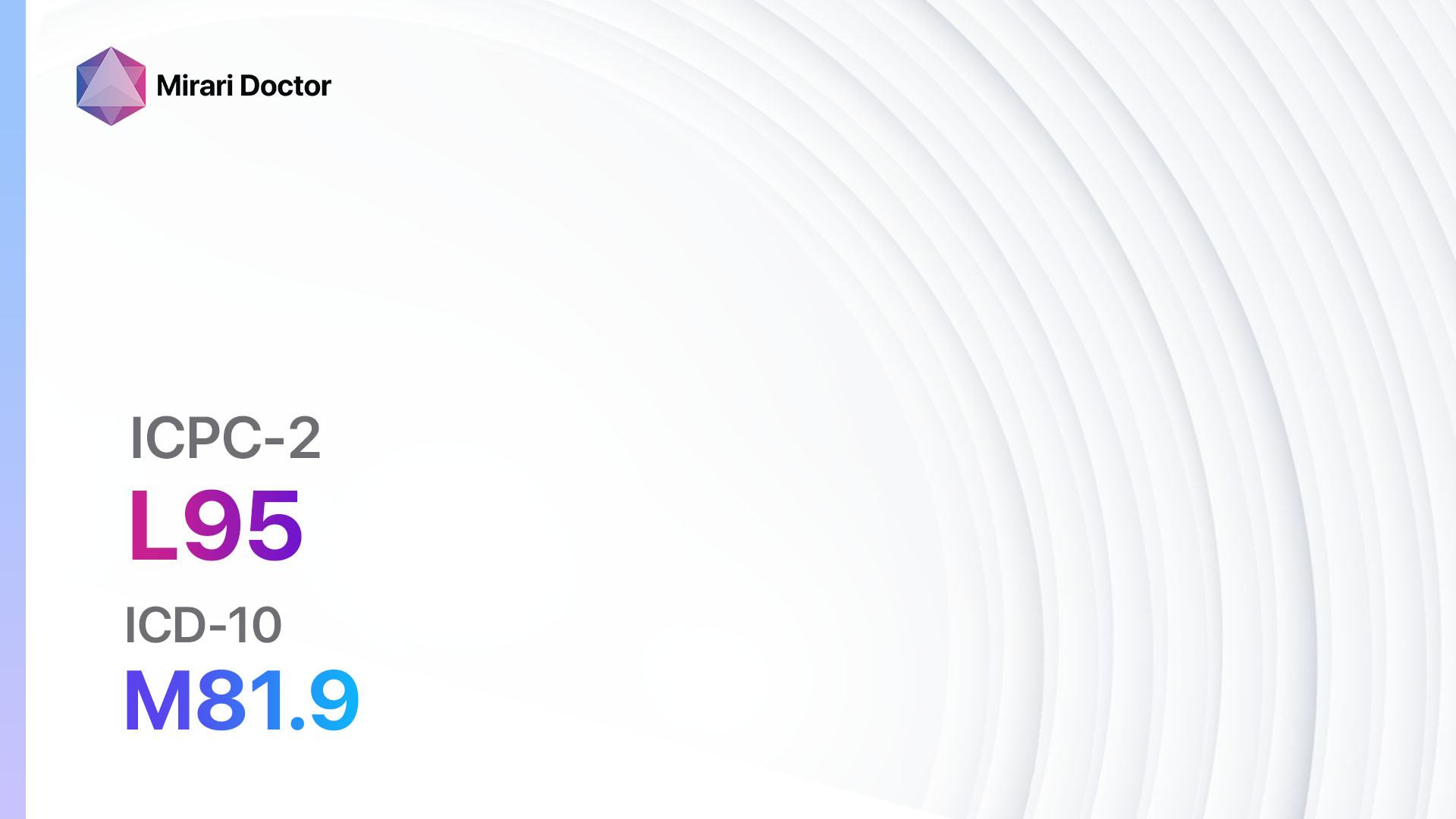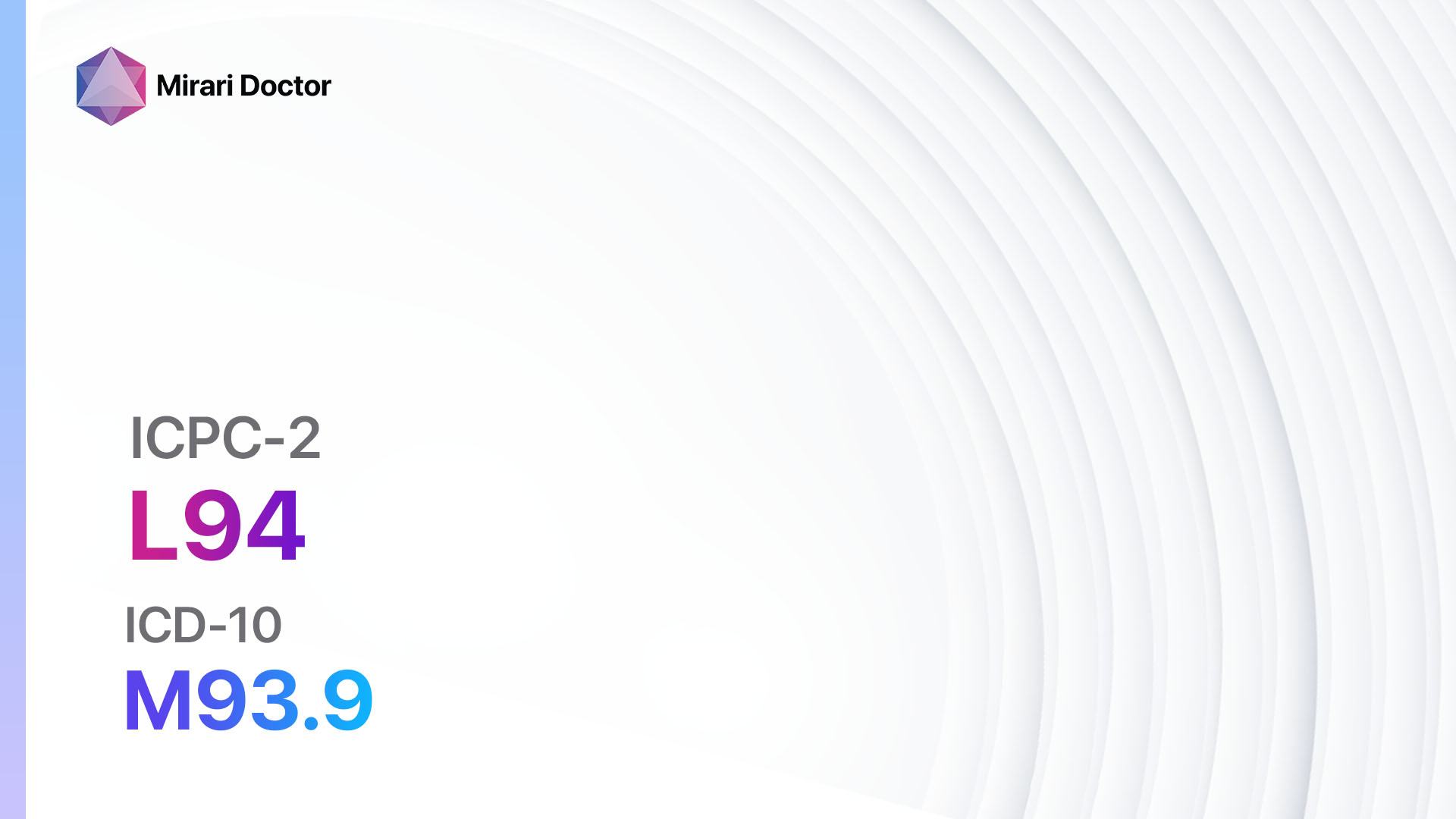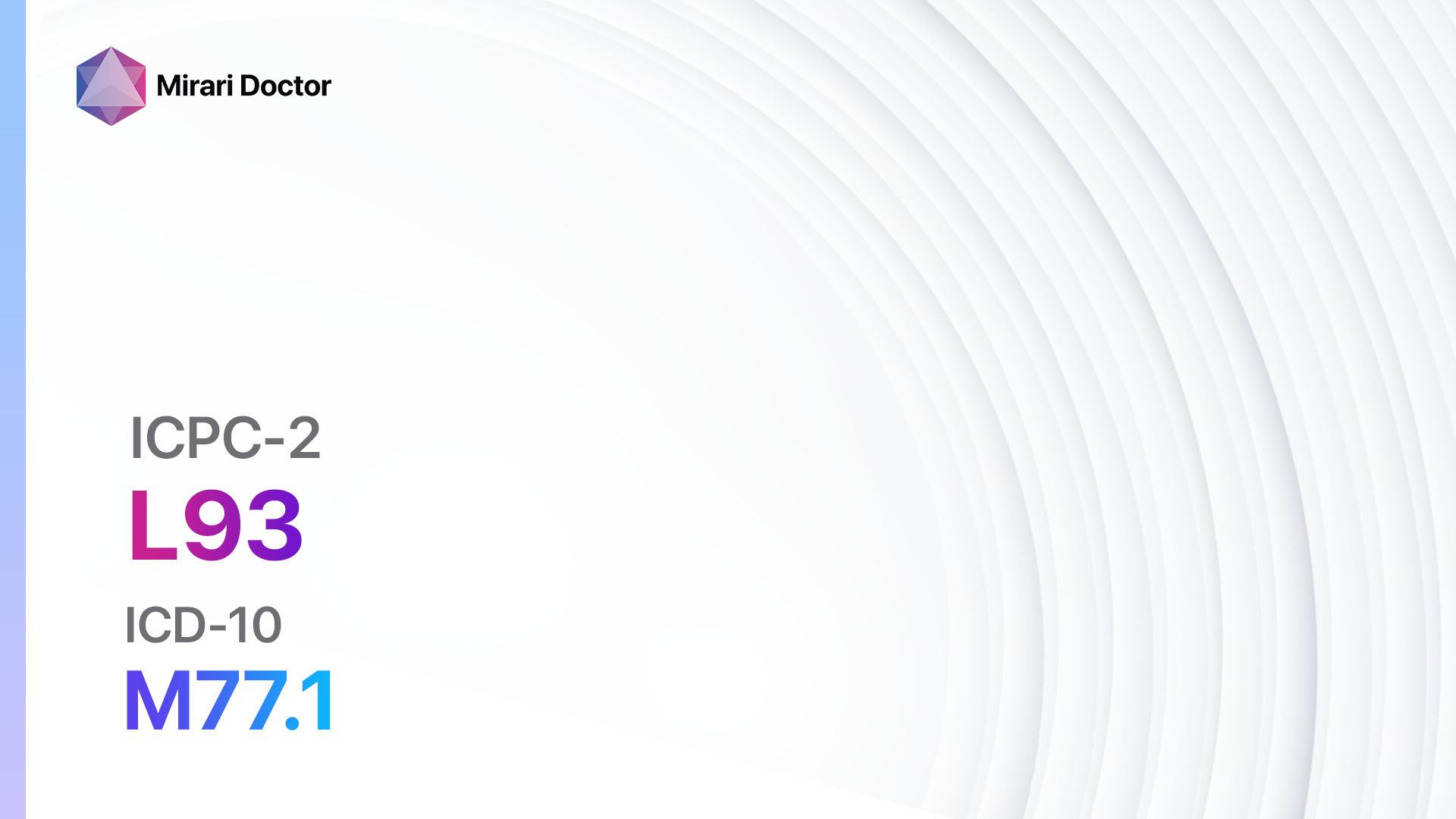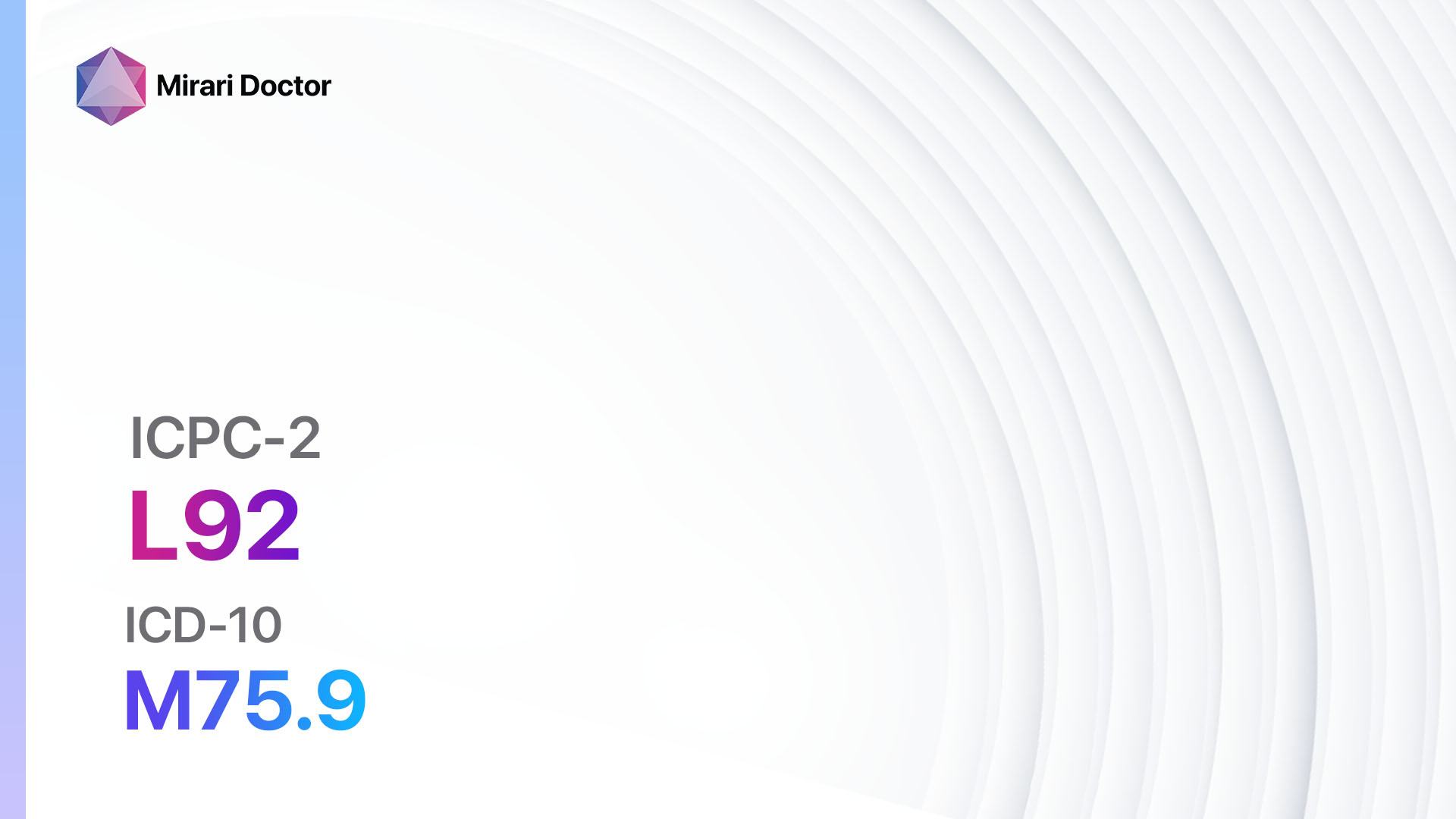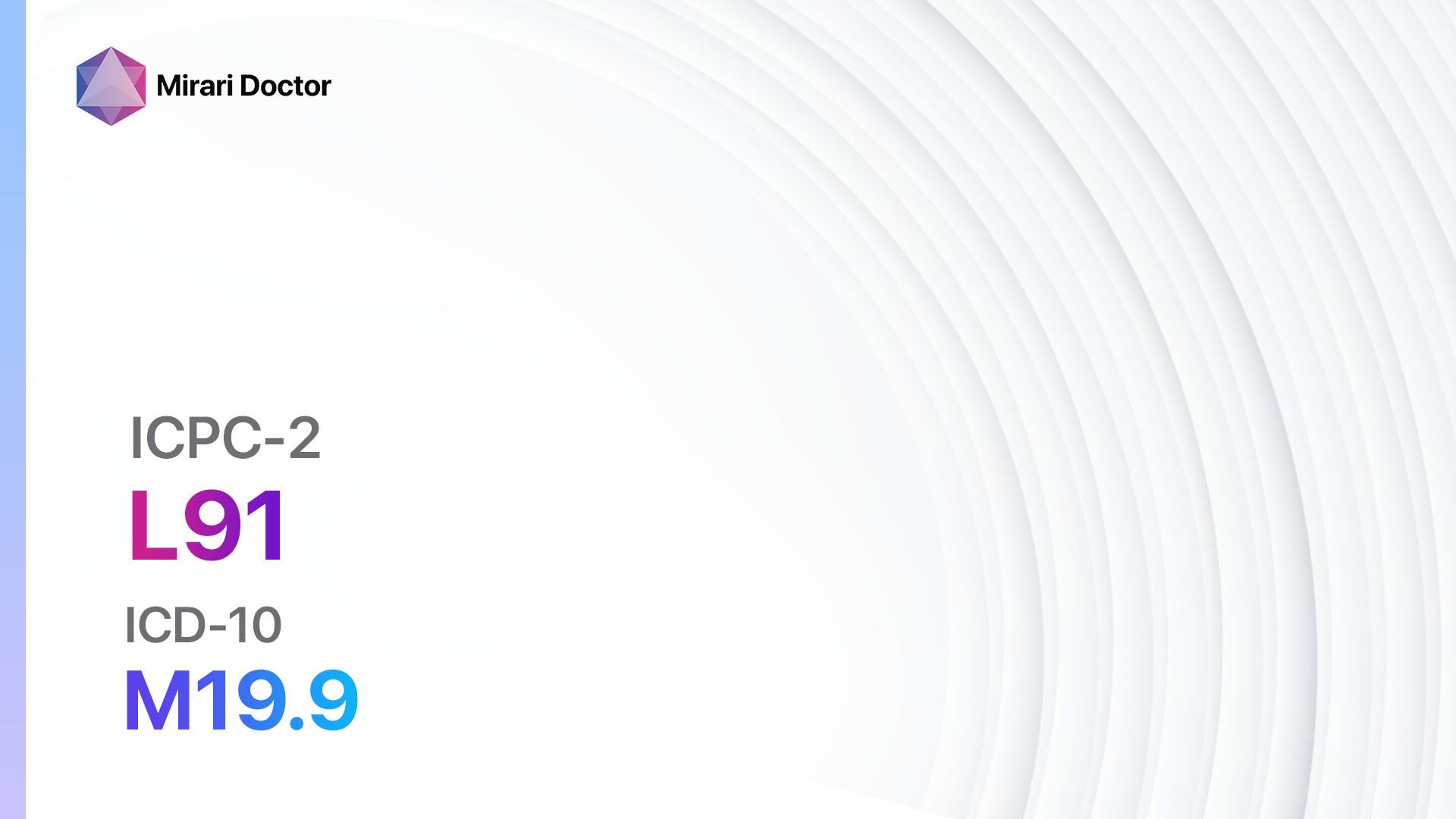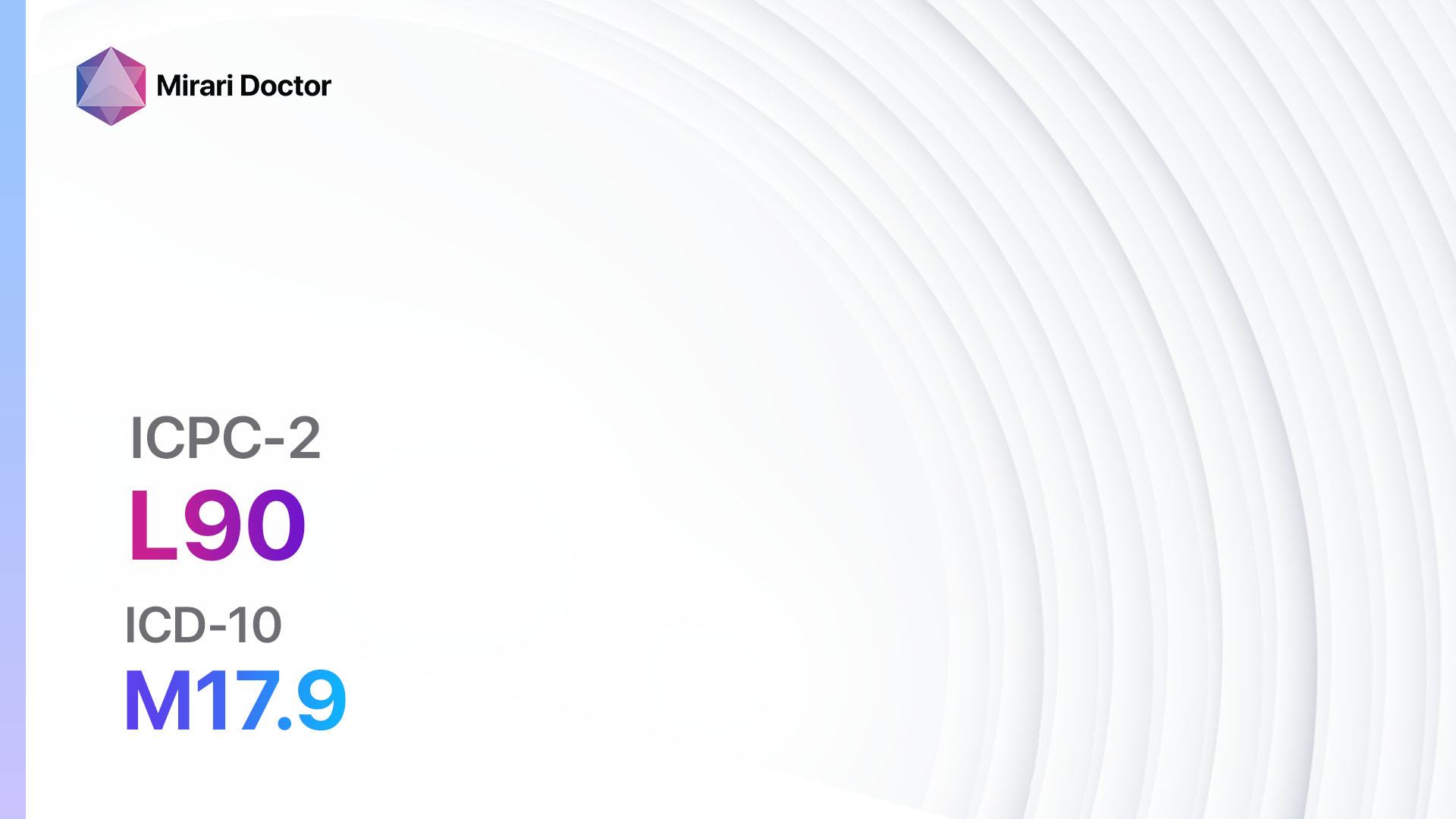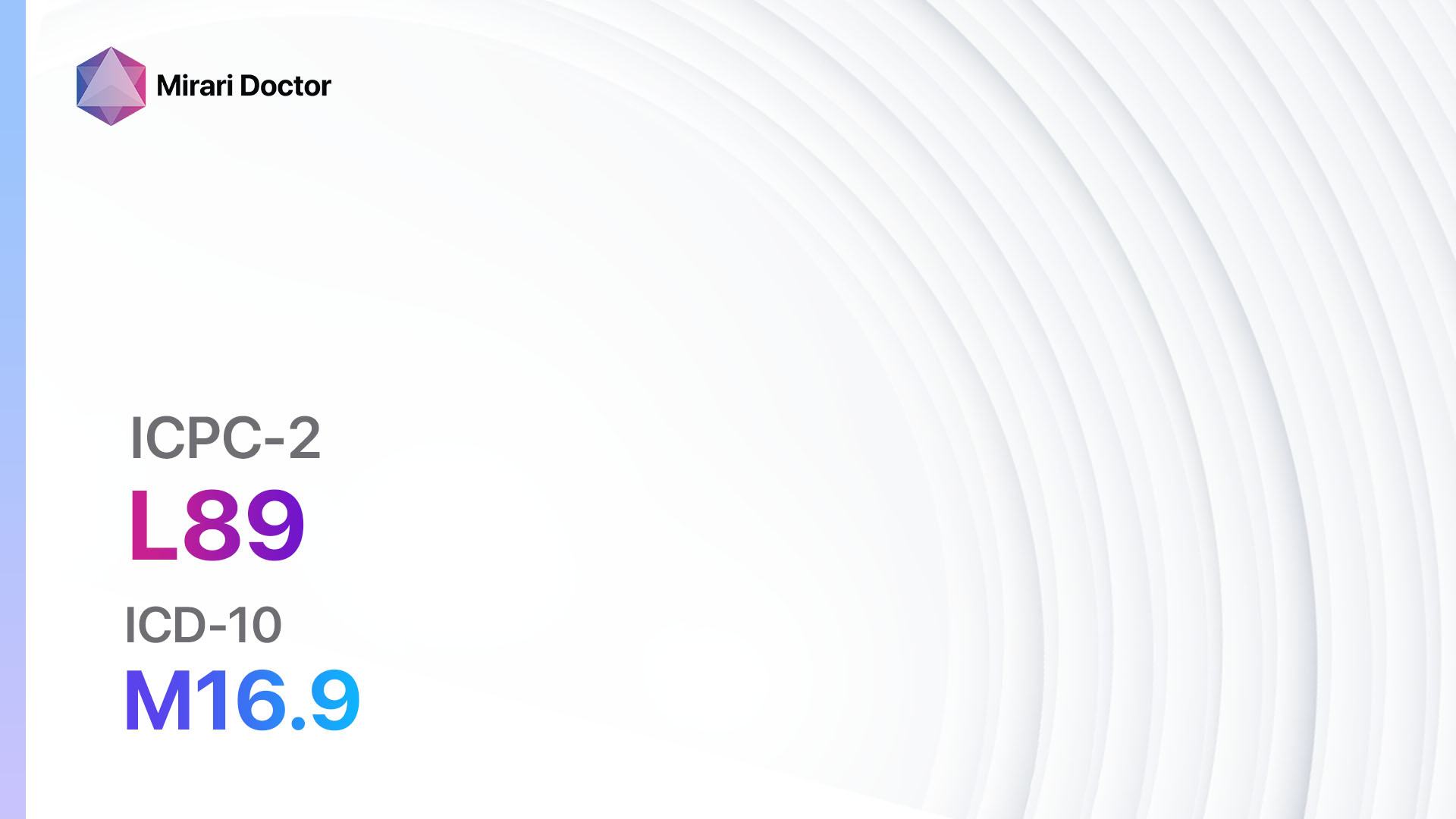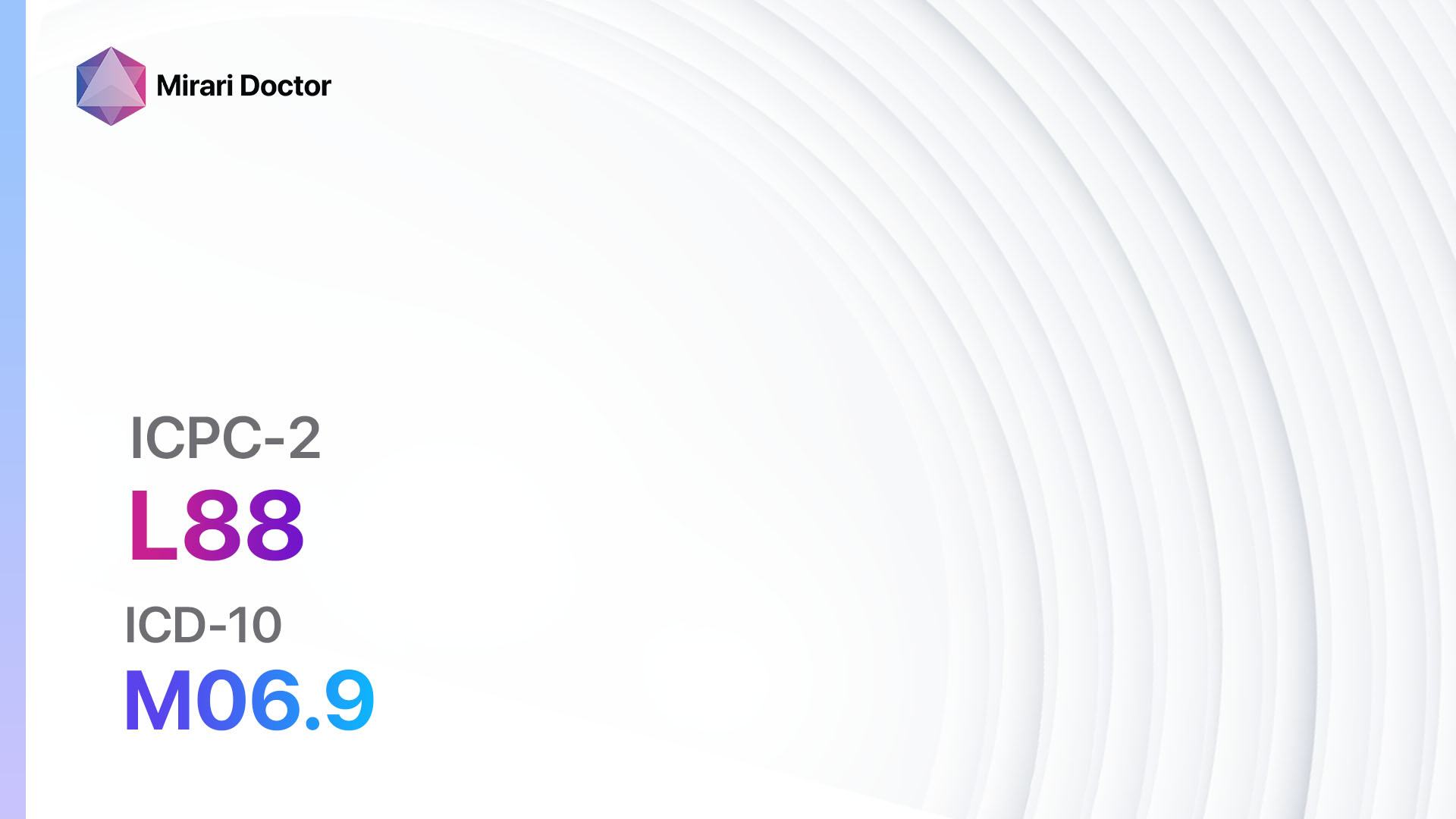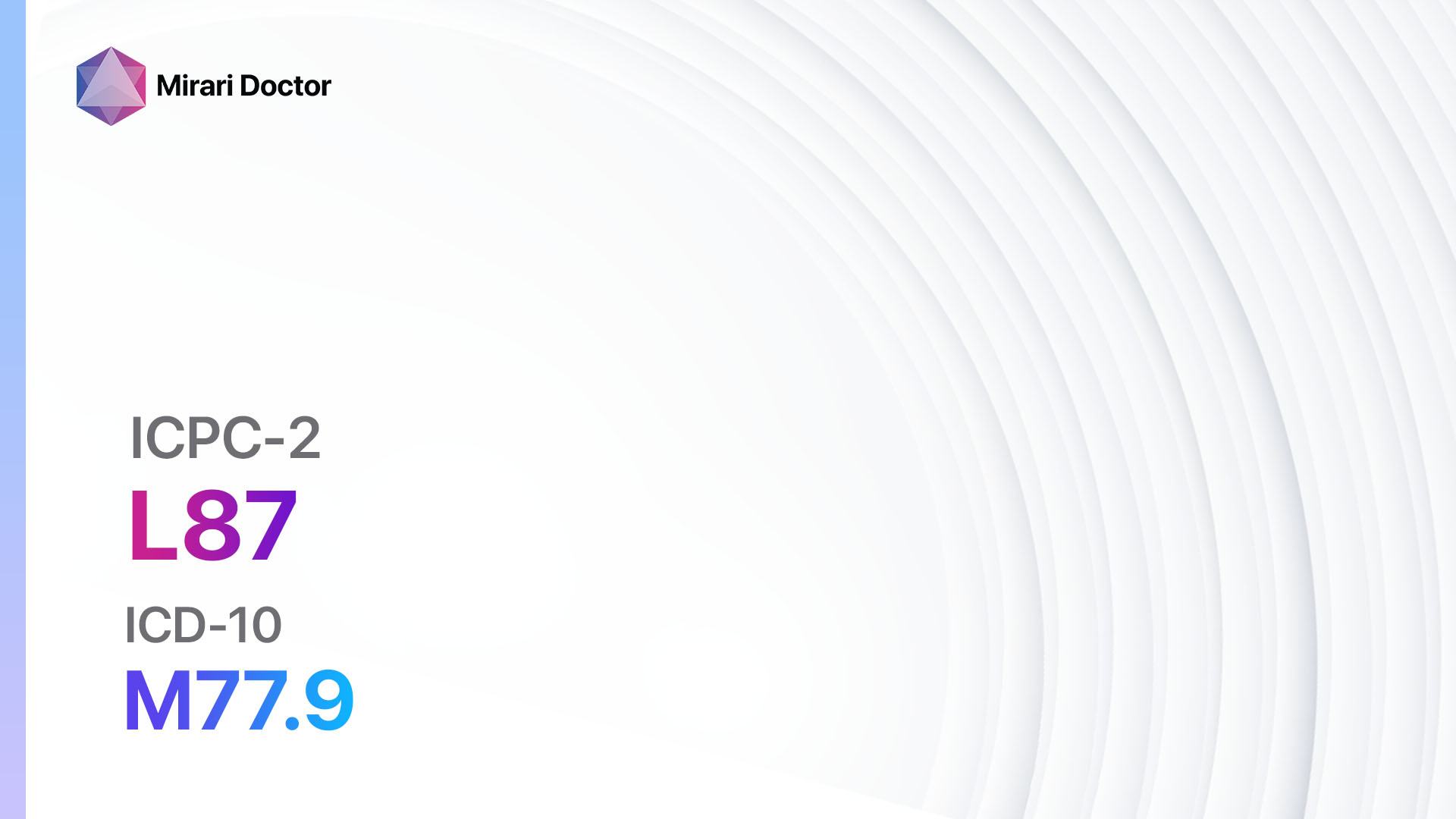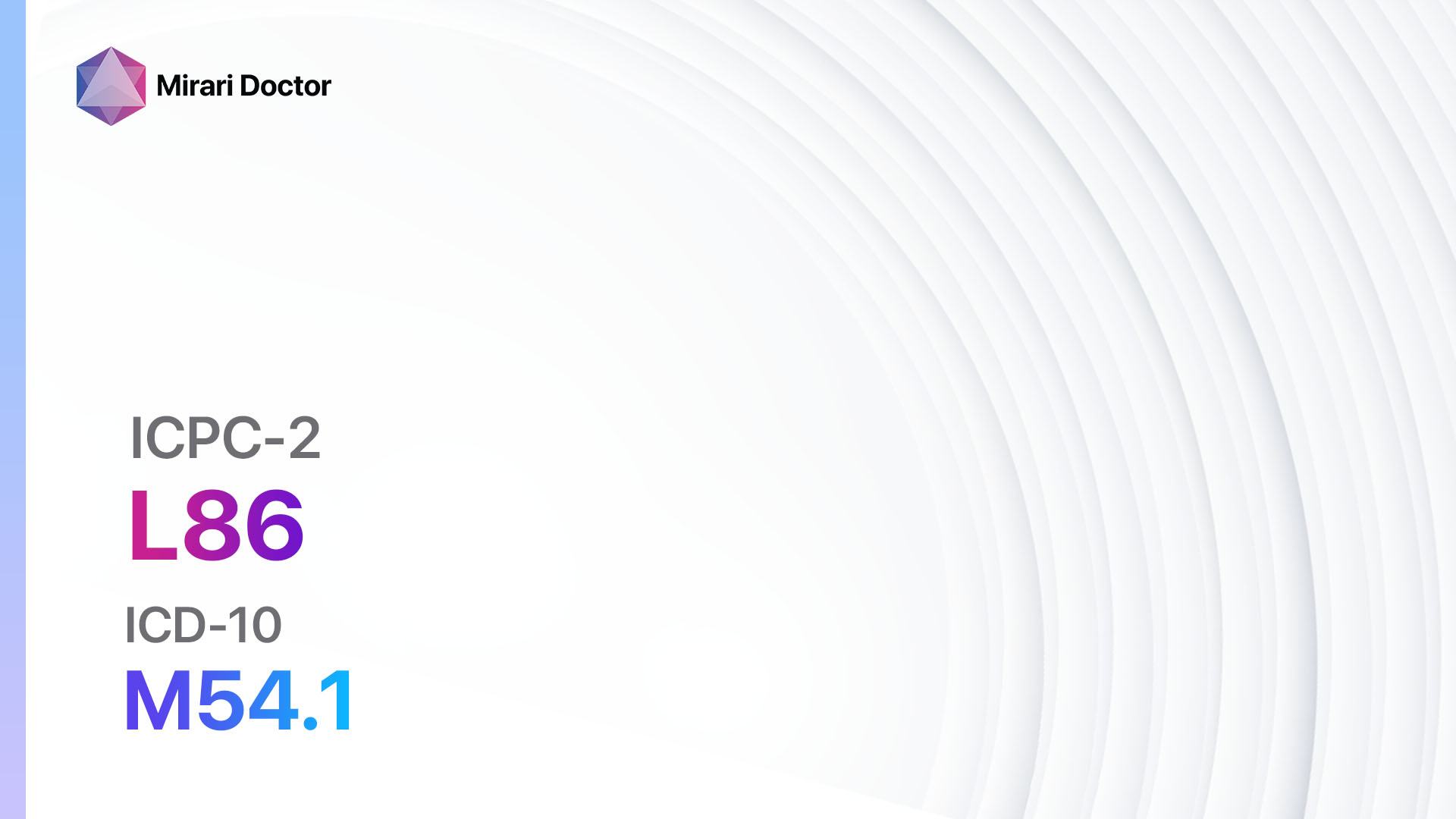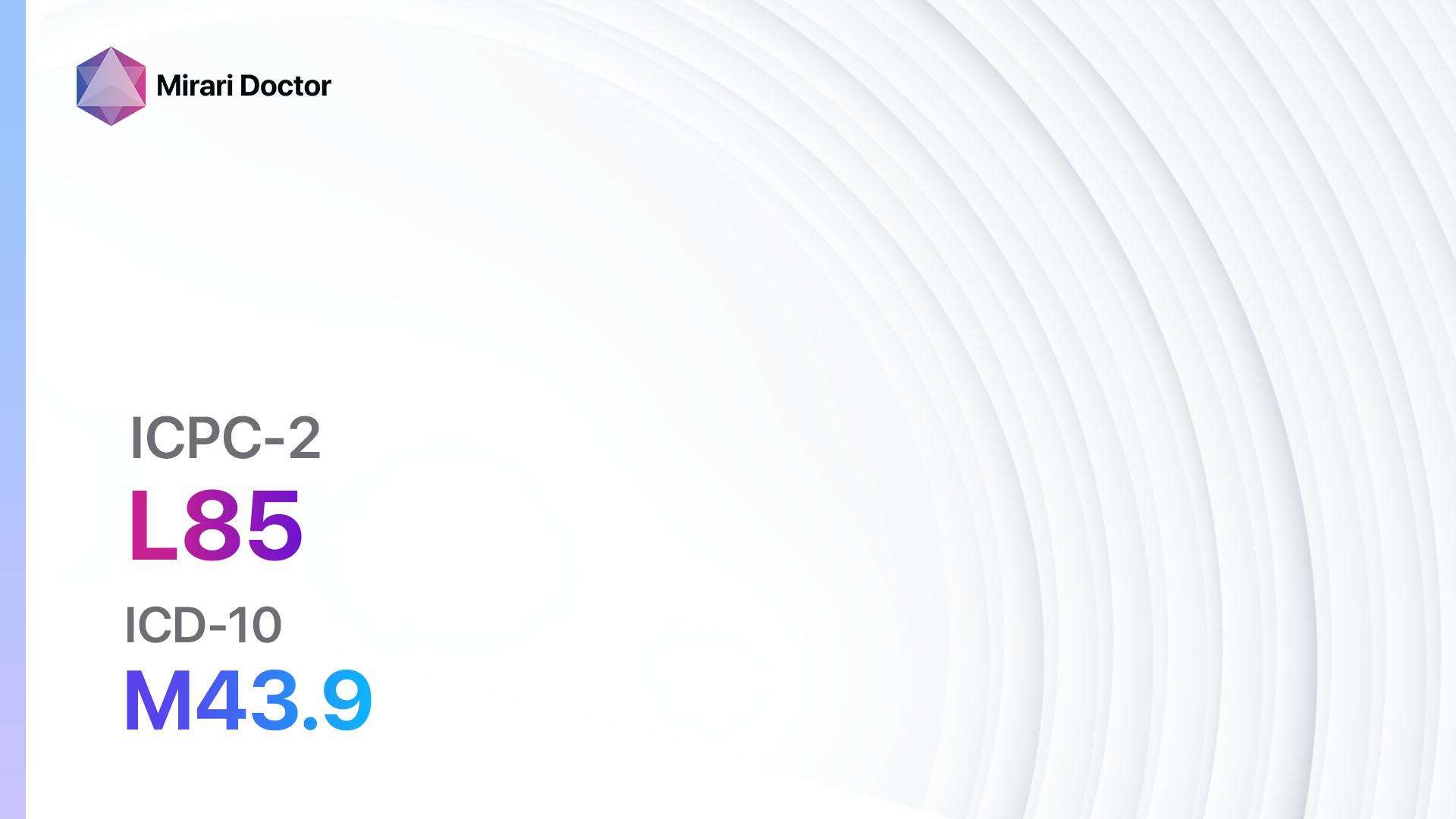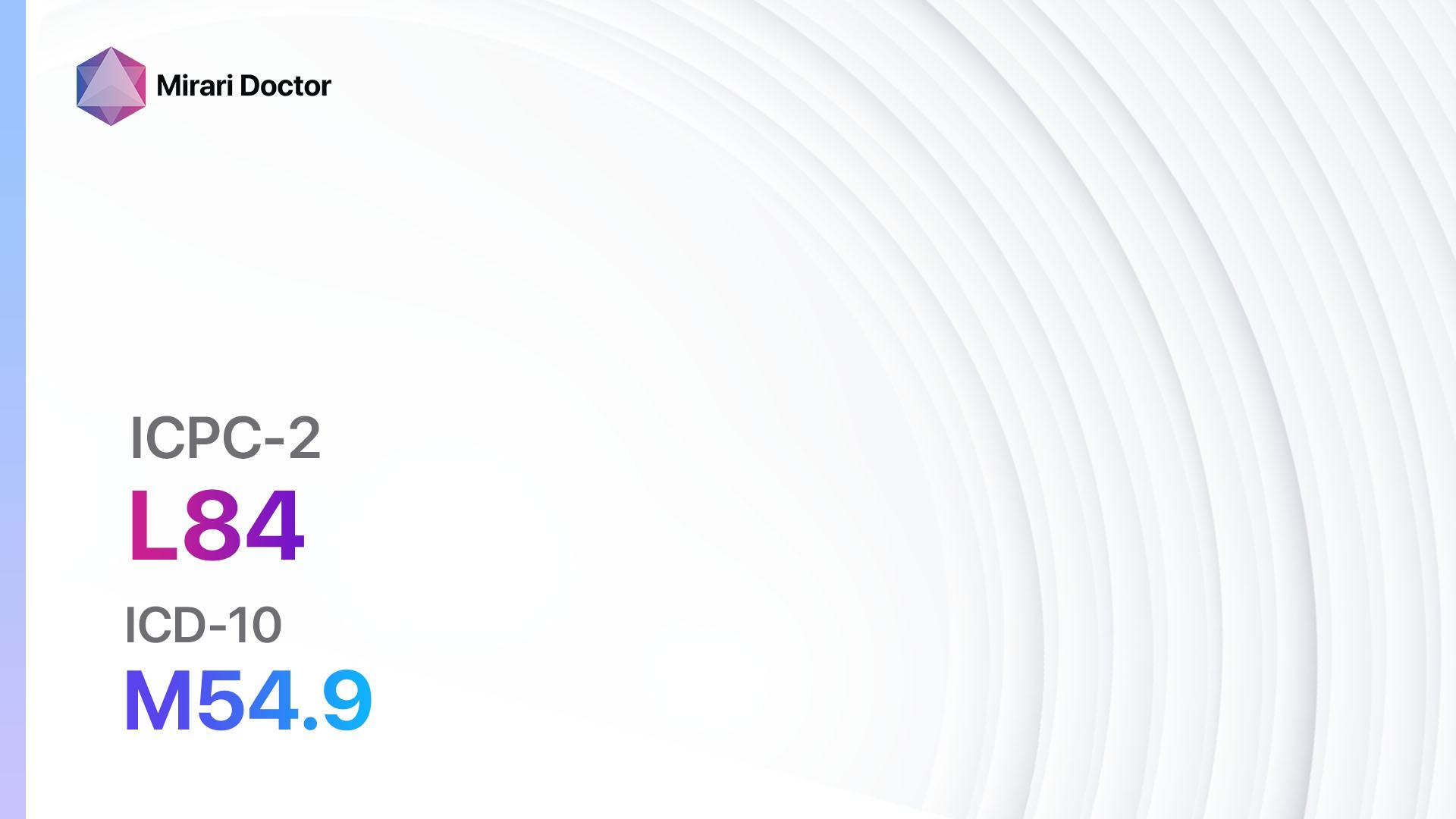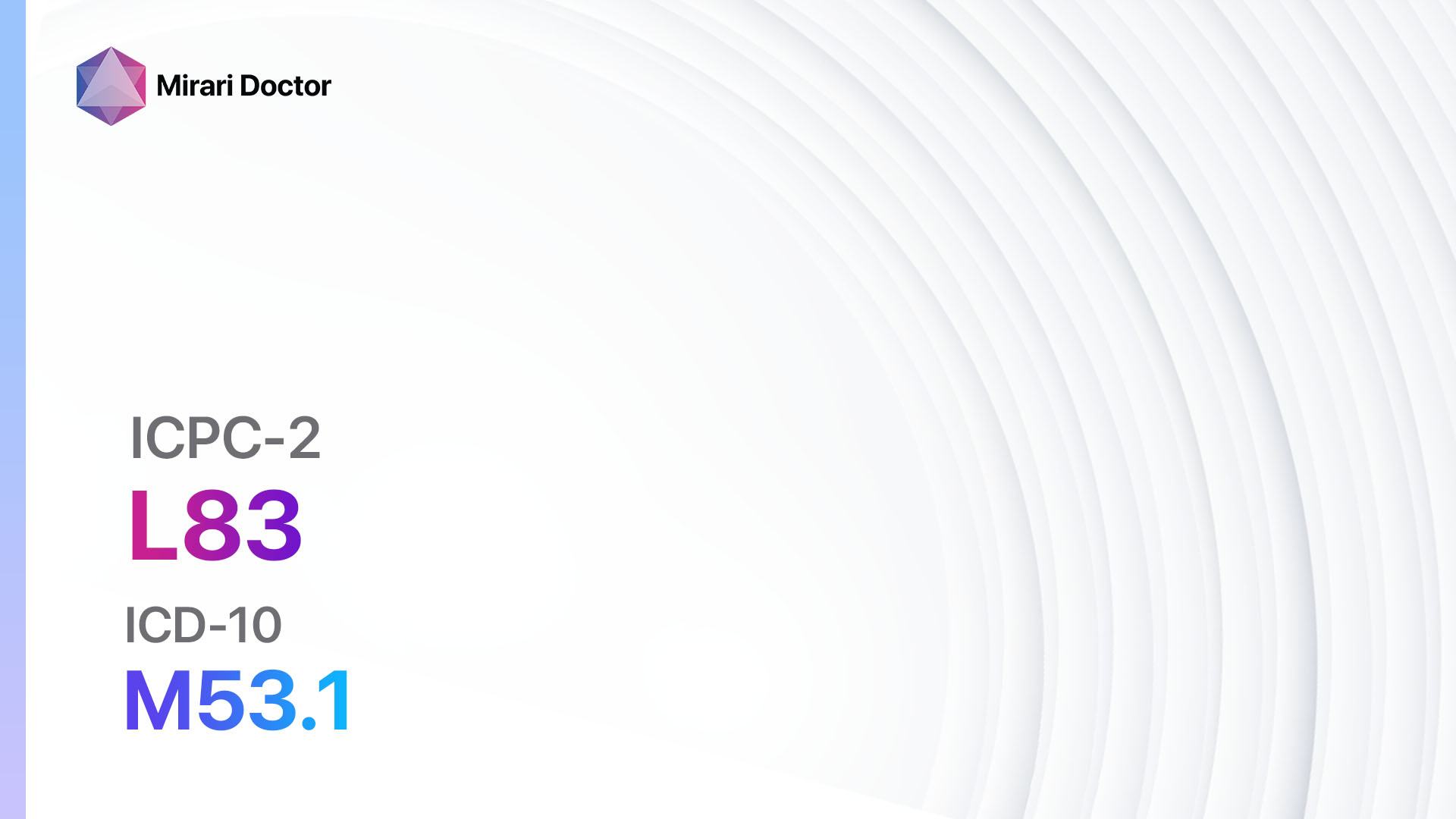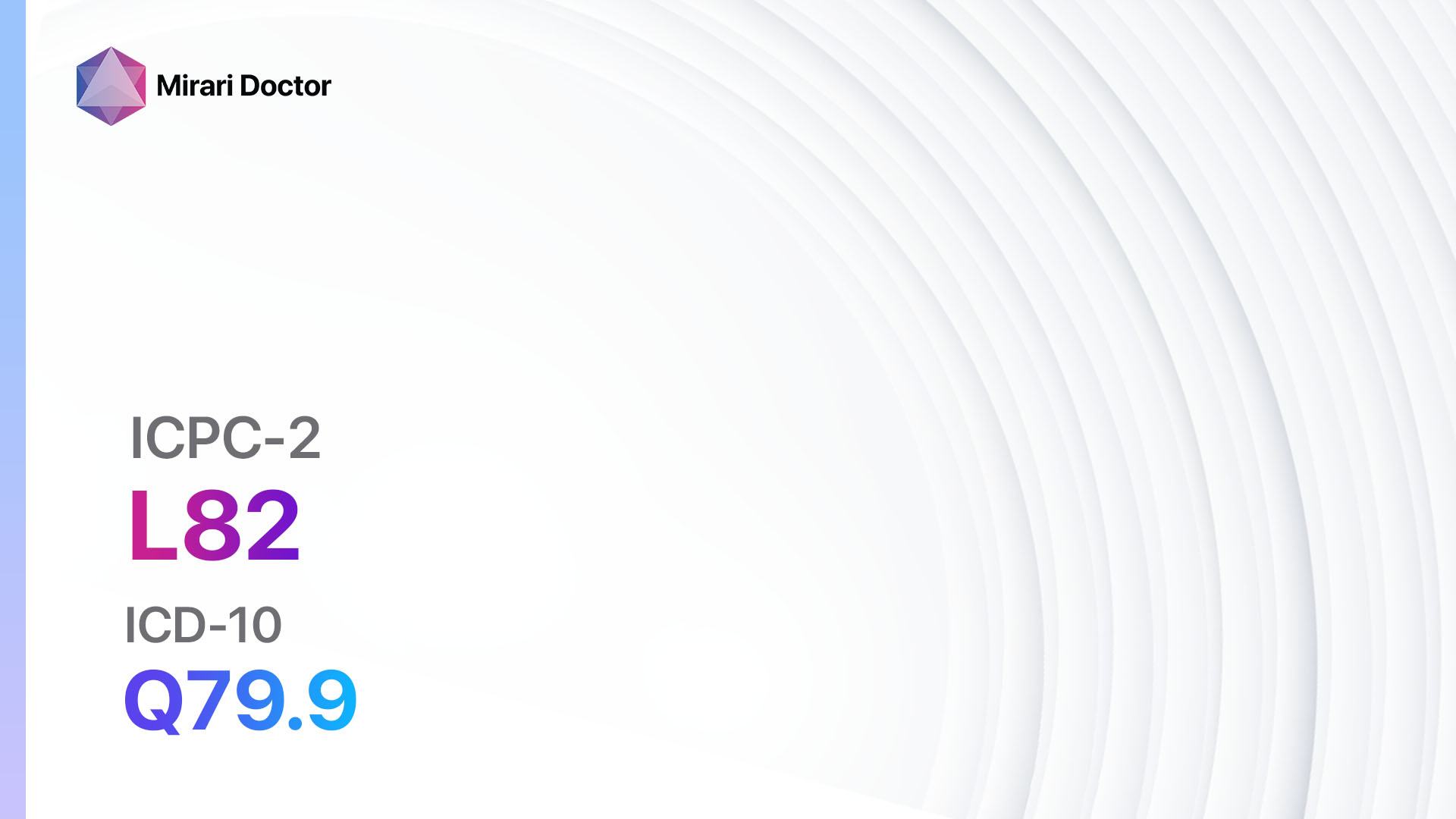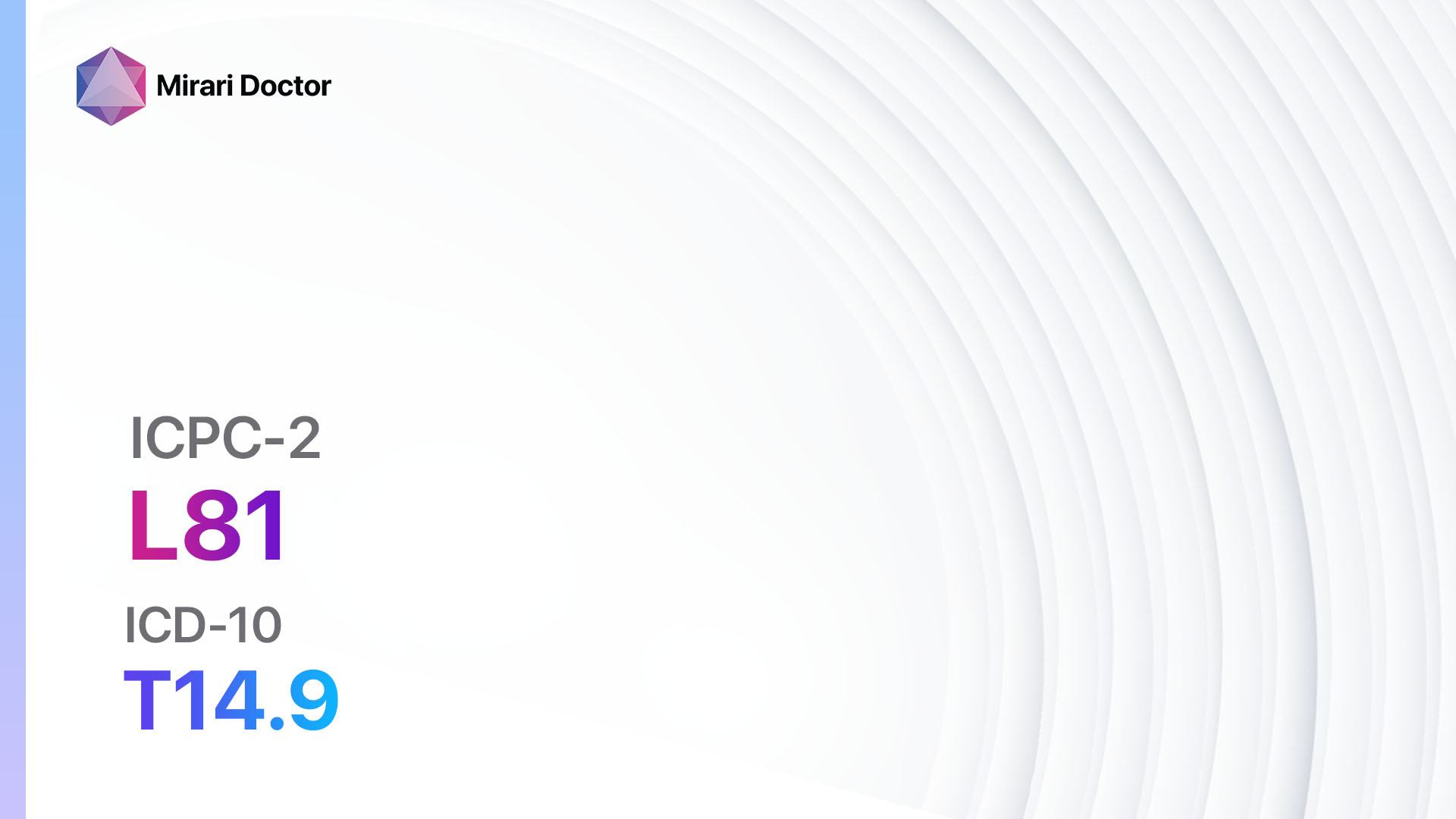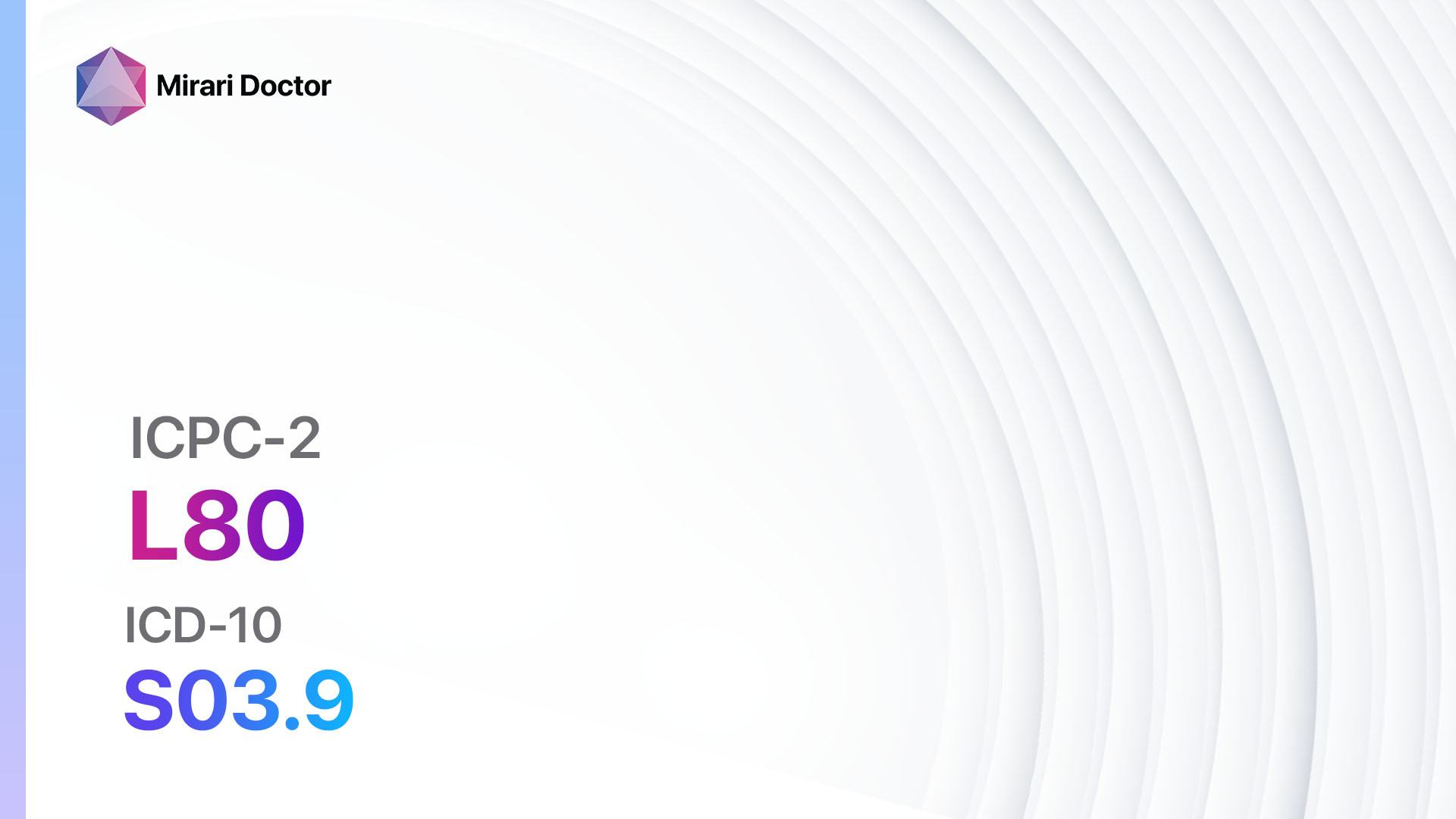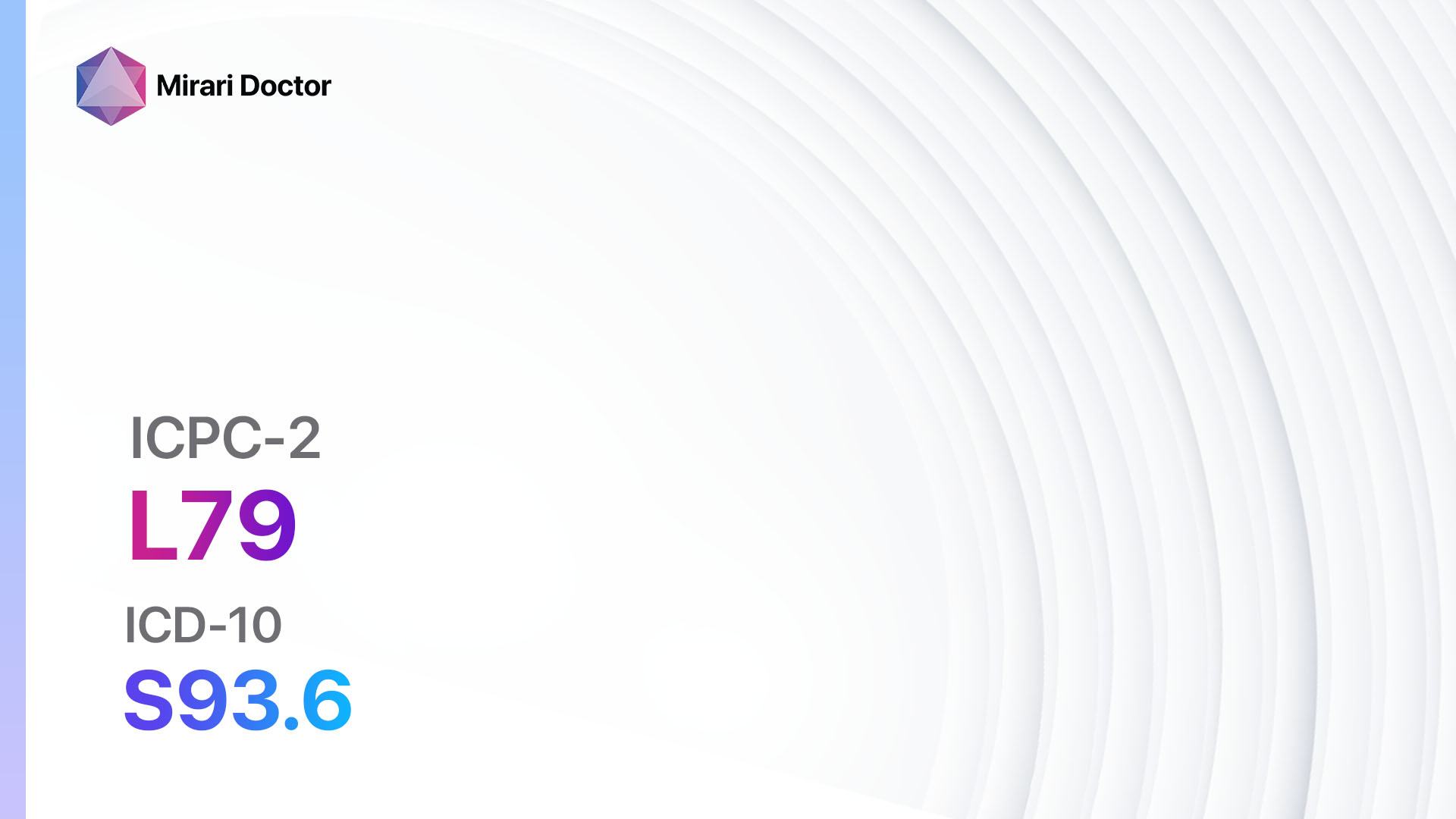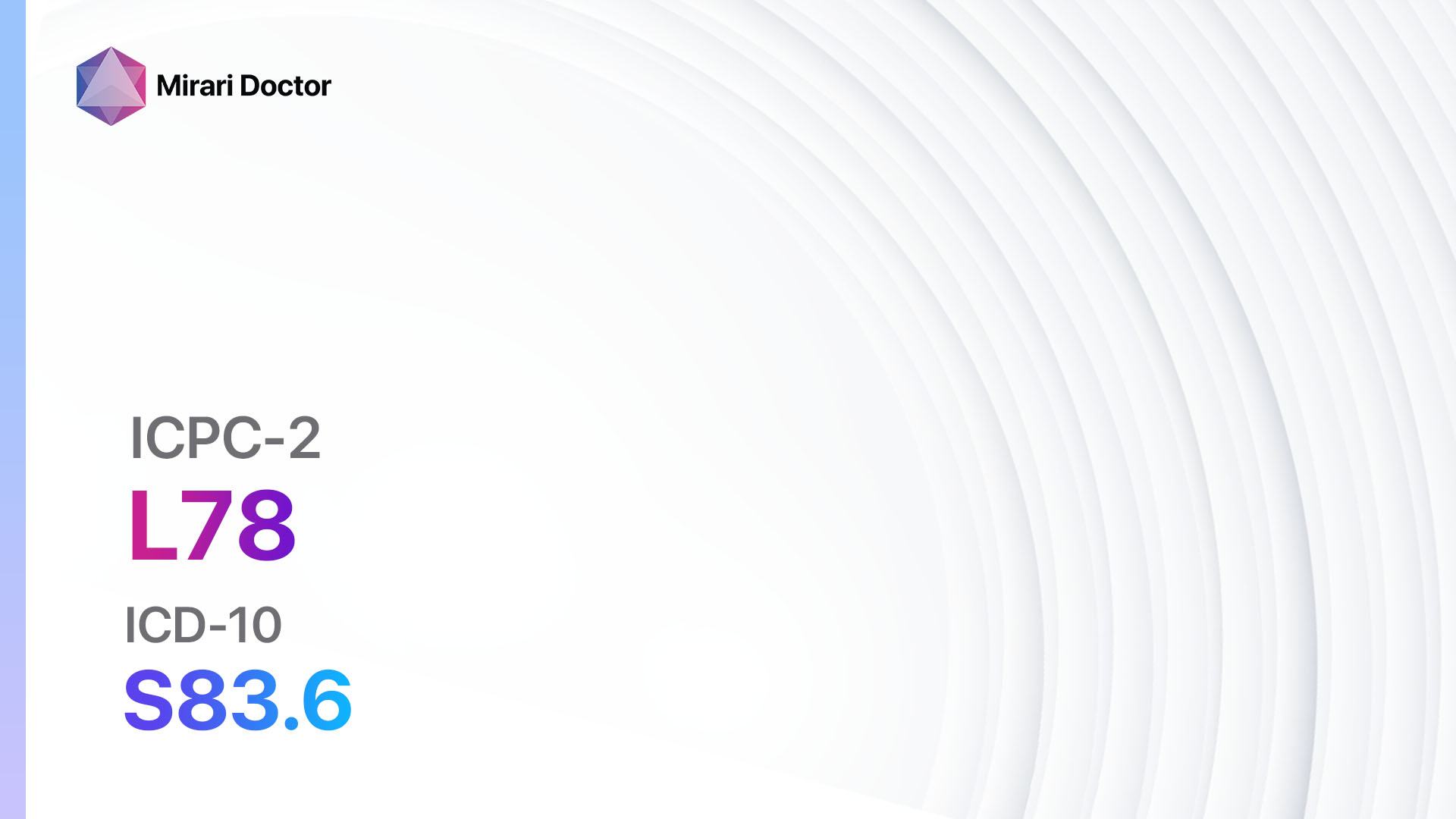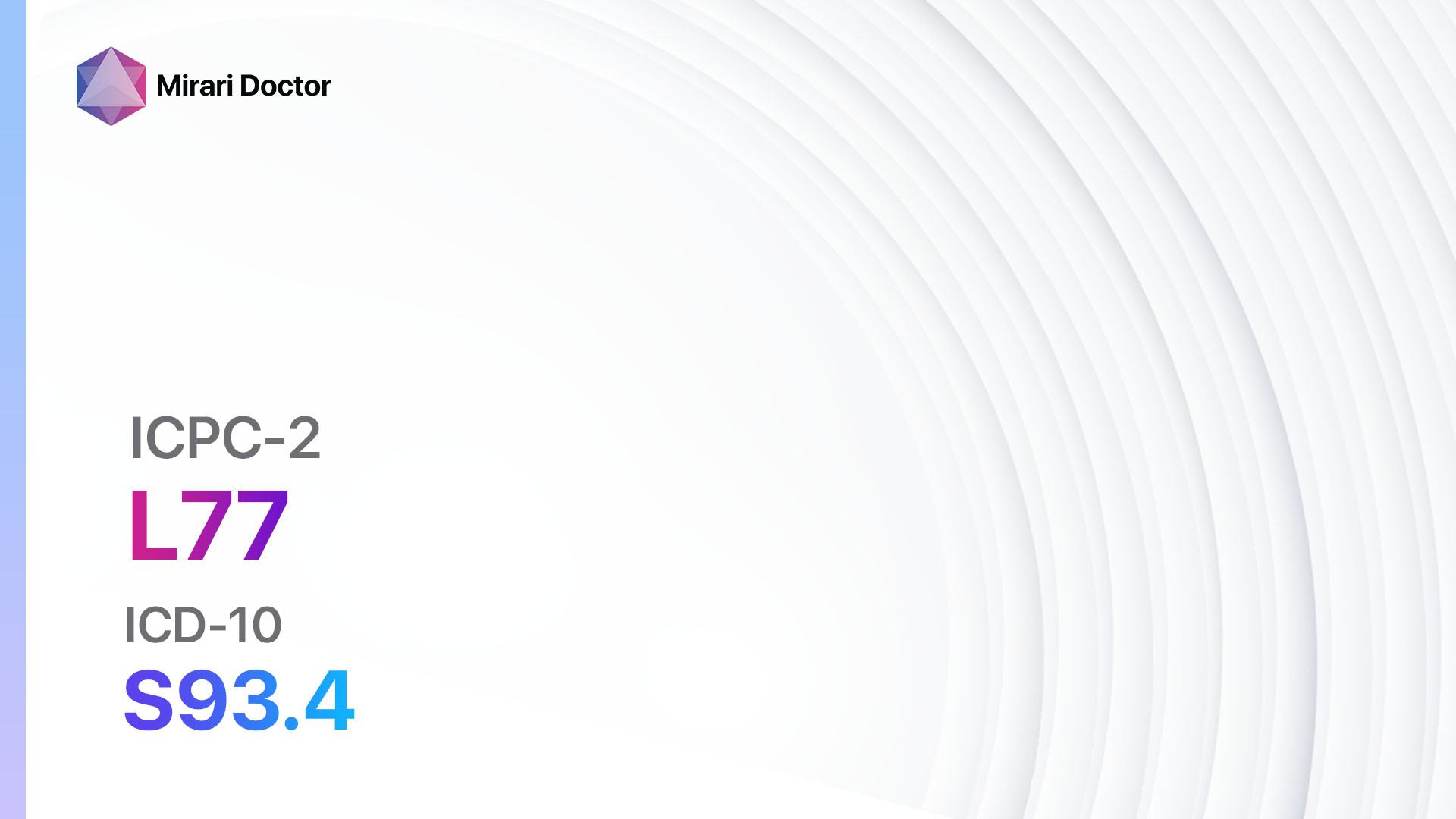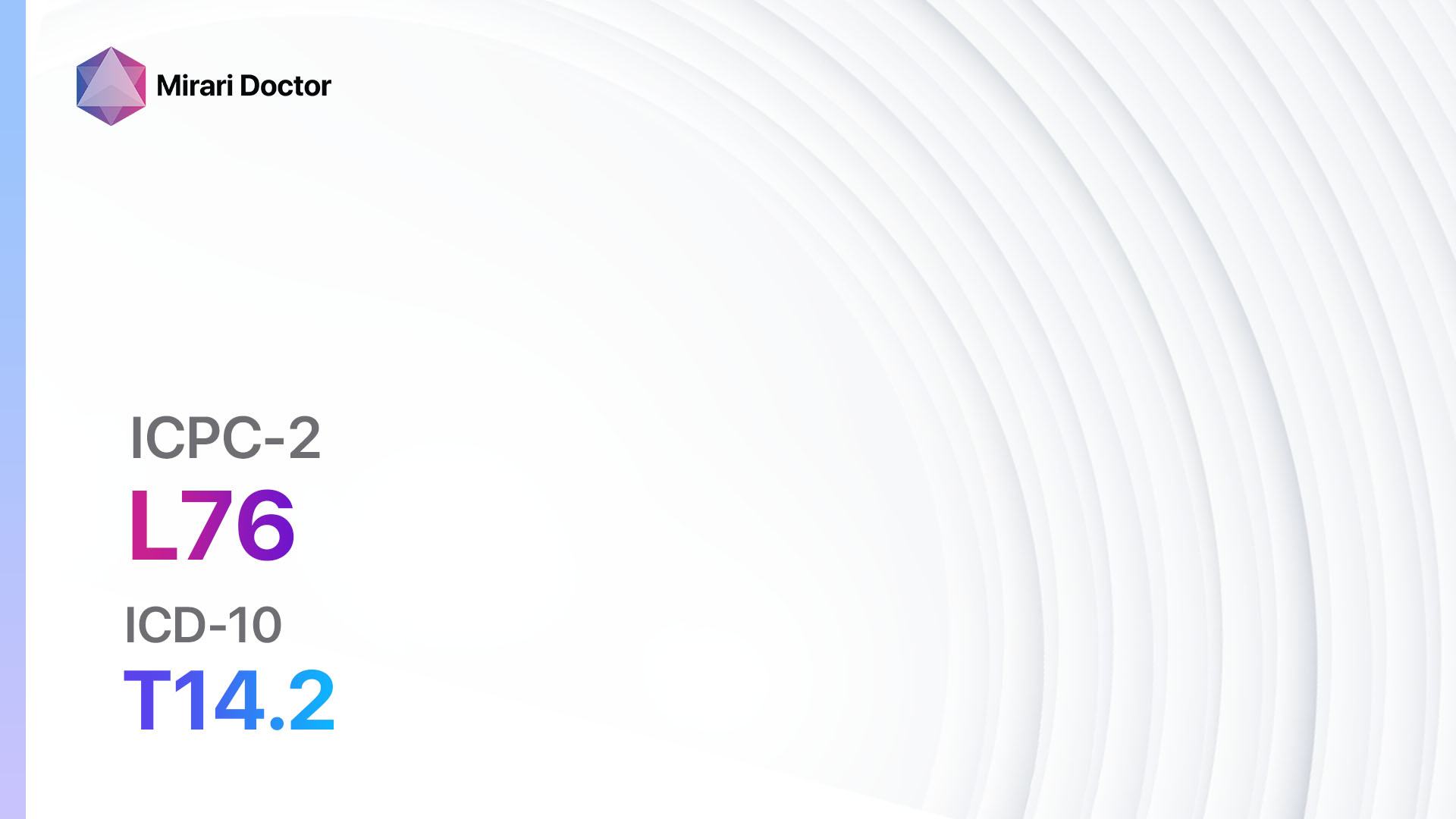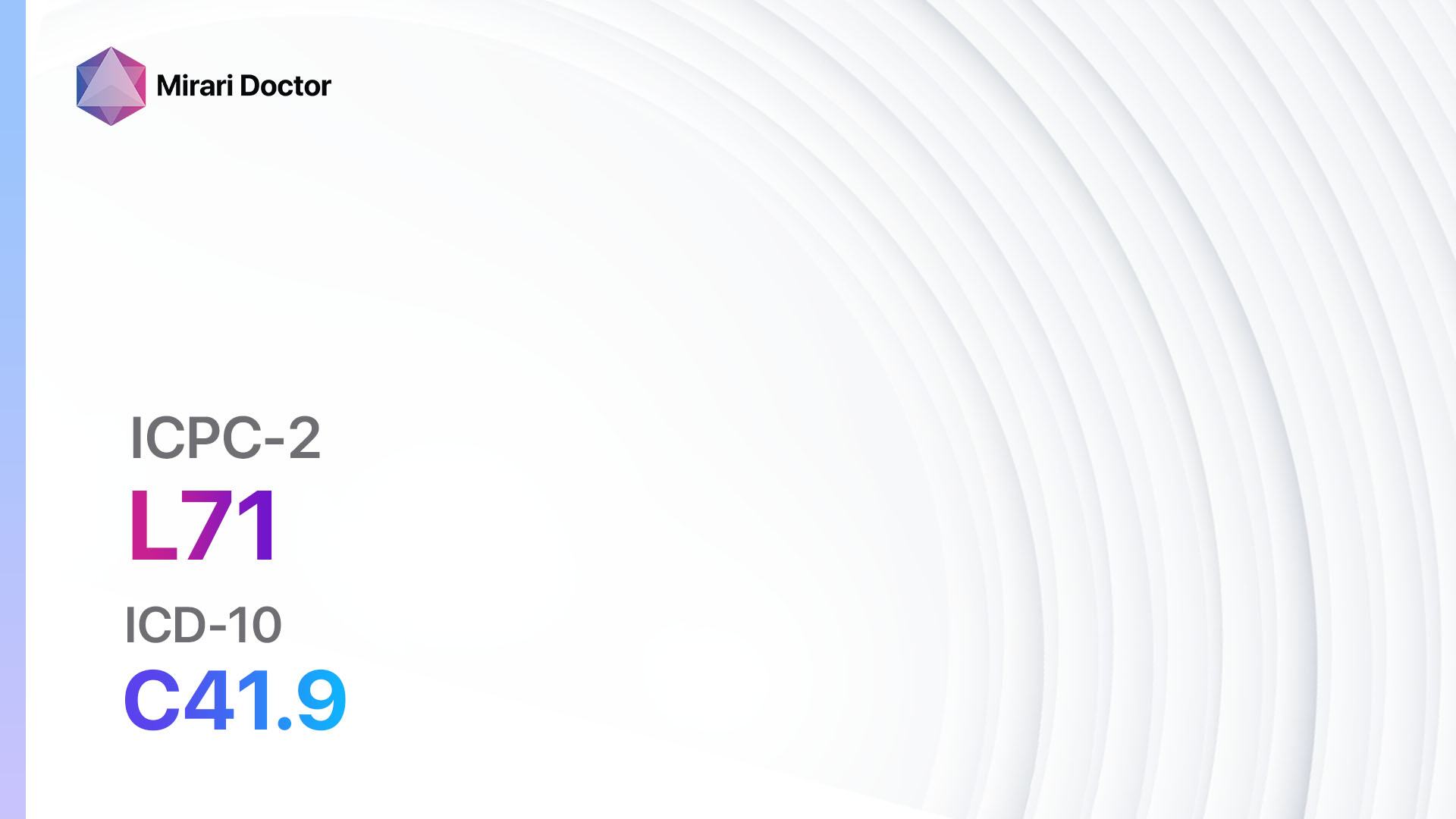
Introduction
Malignant neoplasm musculoskeletal, also known as bone cancer, is a rare type of cancer that originates in the bones. It can affect any bone in the body, but most commonly occurs in the long bones of the arms and legs.[1] This guide aims to provide a comprehensive overview of the diagnosis and possible interventions for malignant neoplasm musculoskeletal.
Codes
- ICPC-2 Code: L71 Malignant neoplasm musculoskeletal[2]
- ICD-10 Code: C41.9 Malignant neoplasm of bone and articular cartilage, unspecified[3]
Symptoms
- Bone pain: Persistent pain in the affected bone that may worsen at night or with activity.[4]
- Swelling and tenderness: Swelling and tenderness around the affected bone.[4]
- Fractures: Increased risk of fractures due to weakened bones.[5]
- Fatigue: Generalized fatigue and weakness.[6]
- Unintentional weight loss: Unexplained weight loss.[6]
Causes
The exact cause of malignant neoplasm musculoskeletal is unknown. However, certain risk factors may increase the likelihood of developing this condition:
- Genetic factors: Certain genetic conditions, such as Li-Fraumeni syndrome and hereditary retinoblastoma, increase the risk of bone cancer.[7]
- Previous radiation therapy: Individuals who have undergone radiation therapy for other conditions have an increased risk of developing bone cancer.[8]
- Paget’s disease: Paget’s disease, a condition characterized by abnormal bone growth, may increase the risk of bone cancer.[9]
- Exposure to certain chemicals: Prolonged exposure to chemicals such as vinyl chloride and arsenic may increase the risk of bone cancer.[10]
Diagnostic Steps
Medical History
- Gather information about the patient’s symptoms, including the duration and severity of bone pain, swelling, and fractures.
- Inquire about any previous radiation therapy or history of genetic conditions.
- Ask about any exposure to chemicals that may be associated with bone cancer.
Physical Examination
- Perform a thorough physical examination, paying special attention to the affected bone and surrounding tissues.
- Palpate the area for tenderness, swelling, or any abnormalities.
- Assess the range of motion and strength of the affected limb.
Laboratory Tests
- Blood tests: A complete blood count (CBC) may reveal abnormalities, such as anemia or elevated levels of certain enzymes.
- Tumor markers: Blood tests for specific tumor markers, such as alkaline phosphatase and lactate dehydrogenase, may be elevated in bone cancer.
Diagnostic Imaging
- X-rays: X-rays can help identify bone abnormalities, such as tumors or fractures.
- CT scan: A CT scan provides detailed cross-sectional images of the bones and surrounding tissues.
- MRI: An MRI can provide more detailed images of the bones and soft tissues, helping to determine the extent of the tumor.
- Bone scan: A bone scan involves injecting a small amount of radioactive material into the bloodstream to detect areas of increased bone activity, which may indicate the presence of a tumor.
Other Tests
- Biopsy: A biopsy involves removing a small sample of tissue from the affected bone for examination under a microscope to confirm the diagnosis of bone cancer.
- PET scan: A PET scan may be used to determine if the cancer has spread to other parts of the body.
Follow-up and Patient Education
- Schedule regular follow-up appointments to monitor the progression of the disease and assess the response to treatment.
- Provide education and support to the patient and their family regarding the disease, treatment options, and potential side effects.
Possible Interventions
Traditional Interventions
Medications:
Top 5 drugs for Malignant neoplasm musculoskeletal:
- Chemotherapy (e.g., Doxorubicin, Cisplatin):
- Cost: Varies depending on the specific drugs used.
- Contraindications: Severe kidney or liver disease, pregnancy.
- Side effects: Nausea, vomiting, hair loss, fatigue.
- Severe side effects: Bone marrow suppression, increased risk of infection.
- Drug interactions: Many potential drug interactions, including other chemotherapy drugs.
- Warning: Regular blood tests required to monitor for side effects.
- Radiation therapy:
- Cost: Varies depending on the number of sessions required.
- Contraindications: Pregnancy, certain genetic conditions.
- Side effects: Fatigue, skin changes, hair loss.
- Severe side effects: Damage to surrounding tissues, increased risk of secondary cancers.
- Drug interactions: None.
- Warning: Follow radiation safety precautions.
- Targeted therapy (e.g., Denosumab, Imatinib):
- Cost: Varies depending on the specific drugs used.
- Contraindications: Severe kidney or liver disease, pregnancy.
- Side effects: Diarrhea, fatigue, skin rash.
- Severe side effects: Liver toxicity, heart problems.
- Drug interactions: Many potential drug interactions, including other targeted therapy drugs.
- Warning: Regular blood tests required to monitor for side effects.
- Bisphosphonates (e.g., Pamidronate, Zoledronic acid):
- Cost: Varies depending on the specific drugs used.
- Contraindications: Severe kidney disease, hypocalcemia.
- Side effects: Flu-like symptoms, bone pain, gastrointestinal upset.
- Severe side effects: Osteonecrosis of the jaw, kidney damage.
- Drug interactions: None.
- Warning: Regular dental check-ups required.
- Pain medications (e.g., Opioids, Nonsteroidal anti-inflammatory drugs):
- Cost: Varies depending on the specific drugs used.
- Contraindications: Severe respiratory depression, allergy to opioids.
- Side effects: Sedation, constipation, nausea.
- Severe side effects: Respiratory depression, addiction.
- Drug interactions: Many potential drug interactions, including other pain medications.
- Warning: Regular monitoring for side effects and potential addiction.
Alternative Drugs:
- Immunotherapy (e.g., Pembrolizumab, Nivolumab): Stimulates the immune system to target and destroy cancer cells.
- Angiogenesis inhibitors (e.g., Bevacizumab, Sorafenib): Inhibit the growth of new blood vessels that supply nutrients to the tumor.
- Hormone therapy (e.g., Tamoxifen, Aromatase inhibitors): Used for certain types of bone cancer that are hormone-sensitive.
- Clinical trials: Participation in clinical trials may provide access to experimental treatments.
Surgical Procedures:
- Limb-sparing surgery: Removes the tumor while preserving the limb, followed by reconstruction.
- Amputation: In cases where limb-sparing surgery is not possible, amputation may be necessary.
- Lymph node dissection: Removal of nearby lymph nodes to assess if the cancer has spread.
- Surgical stabilization: In cases of bone fractures, surgical stabilization may be performed to provide stability and promote healing.
- Palliative surgery: Surgery may be performed to relieve symptoms and improve quality of life in advanced cases.
Alternative Interventions
- Acupuncture: May help manage pain and improve overall well-being. Cost: $60-$120 per session.
- Massage therapy: Can help reduce pain, improve circulation, and promote relaxation. Cost: $60-$120 per session.
- Mind-body techniques: Techniques such as meditation and guided imagery may help reduce stress and improve coping mechanisms. Cost: Varies depending on the specific program or practitioner.
- Nutritional therapy: A balanced diet rich in fruits, vegetables, and whole grains may support overall health and well-being. Cost: Varies depending on dietary choices.
- Exercise therapy: Regular exercise, under the guidance of a healthcare professional, can help improve strength, mobility, and overall quality of life. Cost: Varies depending on the specific program or trainer.
Lifestyle Interventions
- Smoking cessation: Quitting smoking can improve overall health and reduce the risk of complications. Cost: Varies depending on the chosen smoking cessation method.
- Healthy diet: A balanced diet rich in fruits, vegetables, and lean proteins can support overall health and well-being. Cost: Varies depending on dietary choices.
- Weight management: Maintaining a healthy weight can reduce stress on the bones and joints. Cost: Varies depending on the chosen weight management program.
- Stress management: Techniques such as meditation, yoga, and deep breathing exercises can help reduce stress and improve overall well-being. Cost: Varies depending on the chosen stress management program or practitioner.
- Support groups: Joining a support group can provide emotional support and a sense of community. Cost: Varies depending on the specific support group or organization.
It is important to note that the cost ranges provided are approximate and may vary depending on the location and availability of the interventions.
Mirari Cold Plasma Alternative Intervention
Understanding Mirari Cold Plasma
- Safe and Non-Invasive Treatment: Mirari Cold Plasma is a safe and non-invasive treatment option for various skin conditions. It does not require incisions, minimizing the risk of scarring, bleeding, or tissue damage.
- Efficient Extraction of Foreign Bodies: Mirari Cold Plasma facilitates the removal of foreign bodies from the skin by degrading and dissociating organic matter, allowing easier access and extraction.
- Pain Reduction and Comfort: Mirari Cold Plasma has a local analgesic effect, providing pain relief during the treatment, making it more comfortable for the patient.
- Reduced Risk of Infection: Mirari Cold Plasma has antimicrobial properties, effectively killing bacteria and reducing the risk of infection.
- Accelerated Healing and Minimal Scarring: Mirari Cold Plasma stimulates wound healing and tissue regeneration, reducing healing time and minimizing the formation of scars.
Mirari Cold Plasma Prescription
Video instructions for using Mirari Cold Plasma Device – L71 Malignant neoplasm musculoskeletal (ICD-10:C41.9)
| Mild | Moderate | Severe |
| Mode setting: 2 (Wound Healing) Location: 0 (Localized) Morning: 15 minutes, Evening: 15 minutes |
Mode setting: 2 (Wound Healing) Location: 0 (Localized) Morning: 30 minutes, Lunch: 30 minutes, Evening: 30 minutes |
Mode setting: 2 (Wound Healing) Location: 0 (Localized) Morning: 30 minutes, Lunch: 30 minutes, Evening: 30 minutes |
| Mode setting: 9 (Arthritis) Location: 0 (Localized) Morning: 15 minutes, Evening: 15 minutes |
Mode setting: 9 (Arthritis) Location: 0 (Localized) Morning: 30 minutes, Lunch: 30 minutes, Evening: 30 minutes |
Mode setting: 9 (Arthritis) Location: 0 (Localized) Morning: 30 minutes, Lunch: 30 minutes, Evening: 30 minutes |
| Mode setting: 7 (Immunotherapy) Location: 6 (Throat, Lymphatic & Thyroid) Morning: 15 minutes, Evening: 15 minutes |
Mode setting: 7 (Immunotherapy) Location: 6 (Throat, Lymphatic & Thyroid) Morning: 30 minutes, Lunch: 30 minutes, Evening: 30 minutes |
Mode setting: 7 (Immunotherapy) Location: 6 (Throat, Lymphatic & Thyroid) Morning: 30 minutes, Lunch: 30 minutes, Evening: 30 minutes |
| Mode setting: 7 (Immunotherapy) Location: 1 (Sacrum) Morning: 15 minutes, Evening: 15 minutes |
Mode setting: 7 (Immunotherapy) Location: 1 (Sacrum) Morning: 30 minutes, Lunch: 30 minutes, Evening: 30 minutes |
Mode setting: 7 (Immunotherapy) Location: 1 (Sacrum) Morning: 30 minutes, Lunch: 30 minutes, Evening: 30 minutes |
| Total Morning: 60 minutes approx. $10 USD, Evening: 60 minutes approx. $10 USD |
Total Morning: 120 minutes approx. $20 USD, Lunch: 120 minutes approx. $20 USD, Evening: 120 minutes approx. $20 USD, |
Total Morning: 120 minutes approx. $20 USD, Lunch: 120 minutes approx. $20 USD, Evening: 120 minutes approx. $20 USD, |
| Usual treatment for 7-60 days approx. $140 USD – $1200 USD | Usual treatment for 6-8 weeks approx. $2,520 USD – $3,360 USD |
Usual treatment for 3-6 months approx. $5,400 USD – $10,800 USD
|
 |
|
Use the Mirari Cold Plasma device to treat Malignant neoplasm musculoskeletal effectively.
WARNING: MIRARI COLD PLASMA IS DESIGNED FOR THE HUMAN BODY WITHOUT ANY ARTIFICIAL OR THIRD PARTY PRODUCTS. USE OF OTHER PRODUCTS IN COMBINATION WITH MIRARI COLD PLASMA MAY CAUSE UNPREDICTABLE EFFECTS, HARM OR INJURY. PLEASE CONSULT A MEDICAL PROFESSIONAL BEFORE COMBINING ANY OTHER PRODUCTS WITH USE OF MIRARI.
Step 1: Cleanse the Skin
- Start by cleaning the affected area of the skin with a gentle cleanser or mild soap and water. Gently pat the area dry with a clean towel.
Step 2: Prepare the Mirari Cold Plasma device
- Ensure that the Mirari Cold Plasma device is fully charged or has fresh batteries as per the manufacturer’s instructions. Make sure the device is clean and in good working condition.
- Switch on the Mirari device using the power button or by following the specific instructions provided with the device.
- Some Mirari devices may have adjustable settings for intensity or treatment duration. Follow the manufacturer’s instructions to select the appropriate settings based on your needs and the recommended guidelines.
Step 3: Apply the Device
- Place the Mirari device in direct contact with the affected area of the skin. Gently glide or hold the device over the skin surface, ensuring even coverage of the area experiencing.
- Slowly move the Mirari device in a circular motion or follow a specific pattern as indicated in the user manual. This helps ensure thorough treatment coverage.
Step 4: Monitor and Assess:
- Keep track of your progress and evaluate the effectiveness of the Mirari device in managing your Malignant neoplasm musculoskeletal. If you have any concerns or notice any adverse reactions, consult with your health care professional.
Note
This guide is for informational purposes only and should not replace the advice of a medical professional. Always consult with your healthcare provider or a qualified medical professional for personal advice, diagnosis, or treatment. Do not solely rely on the information presented here for decisions about your health. Use of this information is at your own risk. The authors of this guide, nor any associated entities or platforms, are not responsible for any potential adverse effects or outcomes based on the content.
Mirari Cold Plasma System Disclaimer
- Purpose: The Mirari Cold Plasma System is a Class 2 medical device designed for use by trained healthcare professionals. It is registered for use in Thailand and Vietnam. It is not intended for use outside of these locations.
- Informational Use: The content and information provided with the device are for educational and informational purposes only. They are not a substitute for professional medical advice or care.
- Variable Outcomes: While the device is approved for specific uses, individual outcomes can differ. We do not assert or guarantee specific medical outcomes.
- Consultation: Prior to utilizing the device or making decisions based on its content, it is essential to consult with a Certified Mirari Tele-Therapist and your medical healthcare provider regarding specific protocols.
- Liability: By using this device, users are acknowledging and accepting all potential risks. Neither the manufacturer nor the distributor will be held accountable for any adverse reactions, injuries, or damages stemming from its use.
- Geographical Availability: This device has received approval for designated purposes by the Thai and Vietnam FDA. As of now, outside of Thailand and Vietnam, the Mirari Cold Plasma System is not available for purchase or use.
References
- American Cancer Society. (2021). What Is Bone Cancer? Retrieved from https://www.cancer.org/cancer/bone-cancer/about/what-is-bone-cancer.html
- World Health Organization. (2021). International Classification of Primary Care, Second edition (ICPC-2). Retrieved from https://www.who.int/standards/classifications/other-classifications/international-classification-of-primary-care
- World Health Organization. (2021). ICD-10 Version:2019. Retrieved from https://icd.who.int/browse10/2019/en#/C41.9
- Mayo Clinic. (2021). Bone cancer. Retrieved from https://www.mayoclinic.org/diseases-conditions/bone-cancer/symptoms-causes/syc-20350217
- American Academy of Orthopaedic Surgeons. (2021). Bone Cancer. Retrieved from https://orthoinfo.aaos.org/en/diseases–conditions/bone-cancer/
- National Cancer Institute. (2021). Bone Cancer: Symptoms and Signs. Retrieved from https://www.cancer.gov/types/bone/bone-fact-sheet#what-are-the-symptoms-of-bone-cancer
- American Cancer Society. (2021). Risk Factors for Bone Cancer. Retrieved from https://www.cancer.org/cancer/bone-cancer/causes-risks-prevention/risk-factors.html
- Berrington de Gonzalez, A., Kutsenko, A., & Rajaraman, P. (2012). Sarcoma risk after radiation exposure. Clinical sarcoma research, 2(1), 18. https://doi.org/10.1186/2045-3329-2-18
- Siegel, R. L., Miller, K. D., & Jemal, A. (2020). Cancer statistics, 2020. CA: a cancer journal for clinicians, 70(1), 7–30. https://doi.org/10.3322/caac.21590
- Welling, D. B., & Lasak, J. M. (2018). Malignant Tumors of the Ear and Temporal Bone. Otolaryngologic clinics of North America, 51(2), 431–441. https://doi.org/10.1016/j.otc.2017.11.012
Related articles
Made in USA



